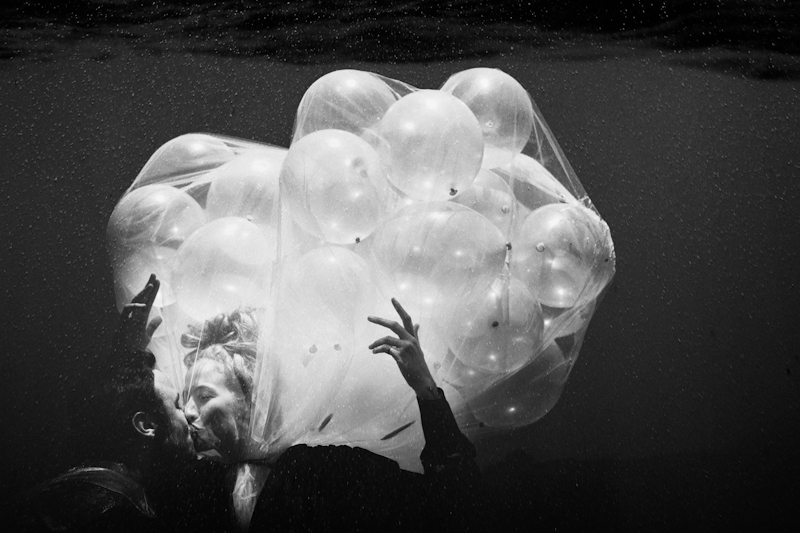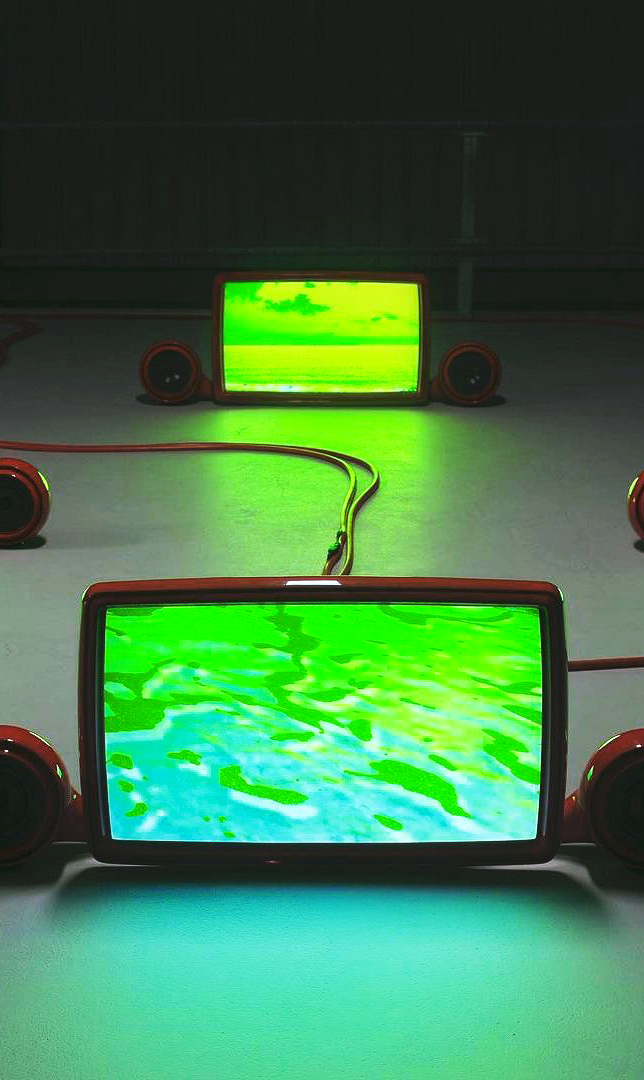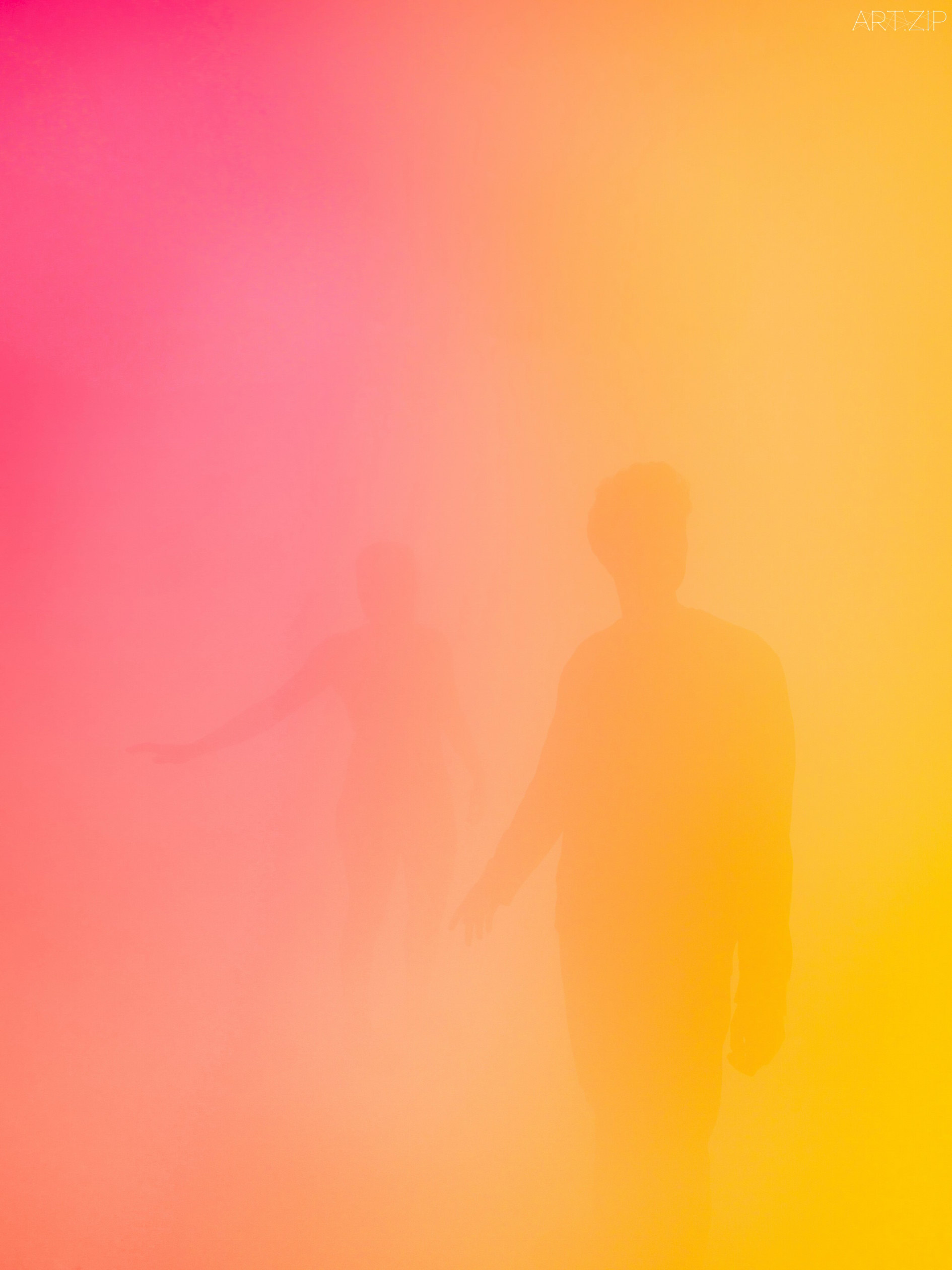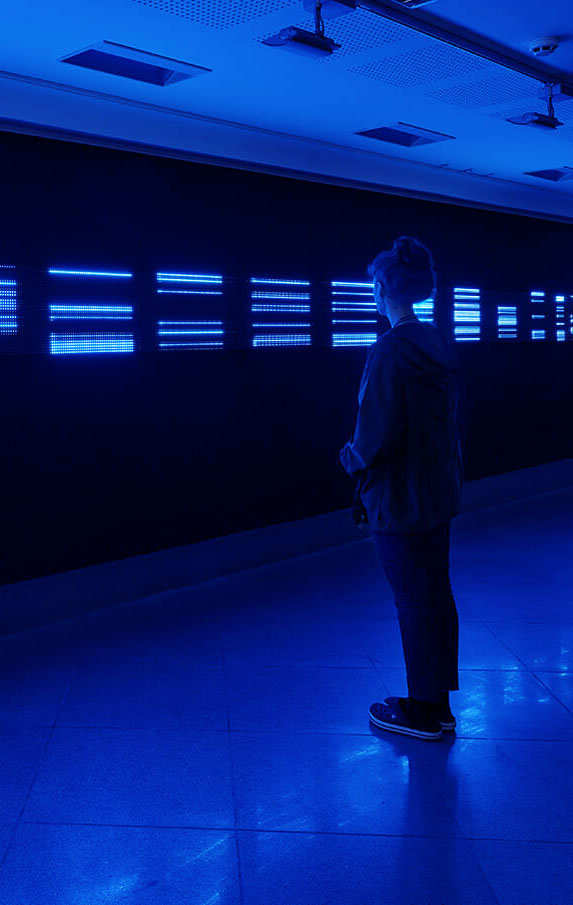


Es Devlin
Blueskywhite
Devlin’s latest installtion is ‘BLUESKYWHITE’, a large-scale work commissioned by 180 Studios, which is currently showing at LUX: New Wave of Contemporary Art, a new exhibition co-curated by Fact and SUUM Project. The work combines light, music and language, and was conceived as a sculptural expression of our emotional response to the possible extinction of blue sky. The installation is formed of two parts: In Part I, text from Byron’s 1816 poem Darkness underscores the viewer’s passage through a 24m long red-lit tunnel. Part II draws from contemporary solar geo-engineering models documented by Elizabeth Kolbert and others which suggest that a haze of suspended particles might reduce global temperature to pre-industrial levels and might also turn the blue sky white.

Studio Stallinga
Heimweh
‘Heimweh’ displays the breaking of waves on a sandy beach fragmented across 12 screens. The waves and their sound move gradually towards the feet of the spectator. At one point the waves turn into a green haze. ‘Heimweh’ started as a reflection on earthly life by considering what most embodies being on earth. When traveling to Mars, for instance, the major missing element would be the sea. As the waves turn green, they deform, similar to memories that get blurred over time. When the green finally subsides, the clear sky and sea emerge again with a sense of relief.

JR
Omelia Contadina
‘Omelia Contadina’ was born out of JR’s interest in the difficulties encountered by a large number of small farmers and inhabitants of rural italy. Alice Rohrwacher explains the origins of the project: ‘last autumn, during a walk on the border between Umbria, Lazio and Tuscany, I told my friend and artist JR of my concerns about the destruction of the agricultural landscape, violated by the intensive monocultures with which major corporations are shaping entire territories. I told him, as the daughter of a beekeeper, of the mass death of insects that such changes bring about… At one point, we stopped at a crossroads: on all sides, uninterrupted rows of hazelnut trees filled the landscape as far as the horizon. As we looked upon this, we commented to each other that it looked like a war cemetery. On the way back we decided — if it looks like a cemetery, we have to hold a funeral. But it must be a funeral full of life!‘

Ann Veronica Janssens
States of Mind
Brussels-based artist Ann Veronica Janssens’ practice is concerned primarily with light, colour, and perception. Janssens makes very few art objects. Instead, her work attempts to escape the ‘tyranny of objects’ and what she describes as their ‘overbearing materiality’. Since the late 1990s, Janssens has filled spaces with washes of coloured light or ‘haze sculptures’: dense, illuminated clouds of vapour that render surroundings unfamiliar and sensory perception altered.

Nohlab
In-line
Nohlab’s audiovisual installation in-line was inspired by the natural phenomenon of horizon, and used a total of 21 LED panels, reflective surfaces on two ends, hazer and a quadraphonic sound system to turn the limited area into a limitless space and present an everchanging time-space experience […]The installation takes its form not only from the content, but also from the space it is exhibited. Its audio and video elements are especially designed for a holistic perception of sound and visuals, letting the audience live a synesthetic experience. This way, the audience steps into a different reality than the one they are already in.

Wolfgang Laib
MoMA
The MoMA presentation of Wolfgang Laib’s “Pollen from Hazelnut” follows a long history of the artist’s work with natural materials. The artist has created pollen fields dozens of times over 36 years, in high profile, highly trafficked museums and institutions around the world, for as long as one year, with no known incidents. For the MoMA installation, the artist is incorporating the same materials in the same manner.

Cao Fei
曹斐
ツァオ·フェイ
Чао Фей
Haze and Fog
Cao Fei’s ‘Haze and Fog’ is a new type of zombie movie set in modern China made by one of the most important Chinese artists working today. Working with film, photography, installation and performance Cao Fei probes her personal and cultural relationship to metropolitan China.Rather than positioning activity as good vs evil, Cao Fei’s major new video commission explores how the collective consciousness of people living in the time of what the artist calls “magical metropolises” emerges from seemingly tedious, mundane, day-to-day life. This magic reality is created through a struggle at the tipping point between the visible and the invisible.